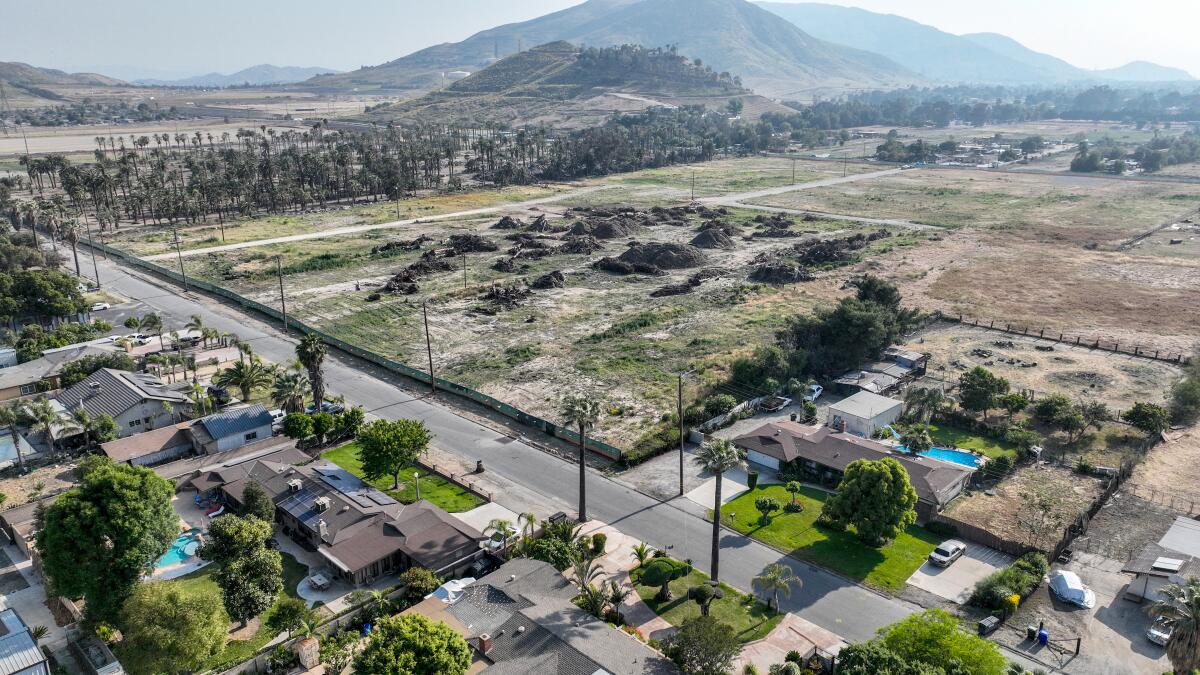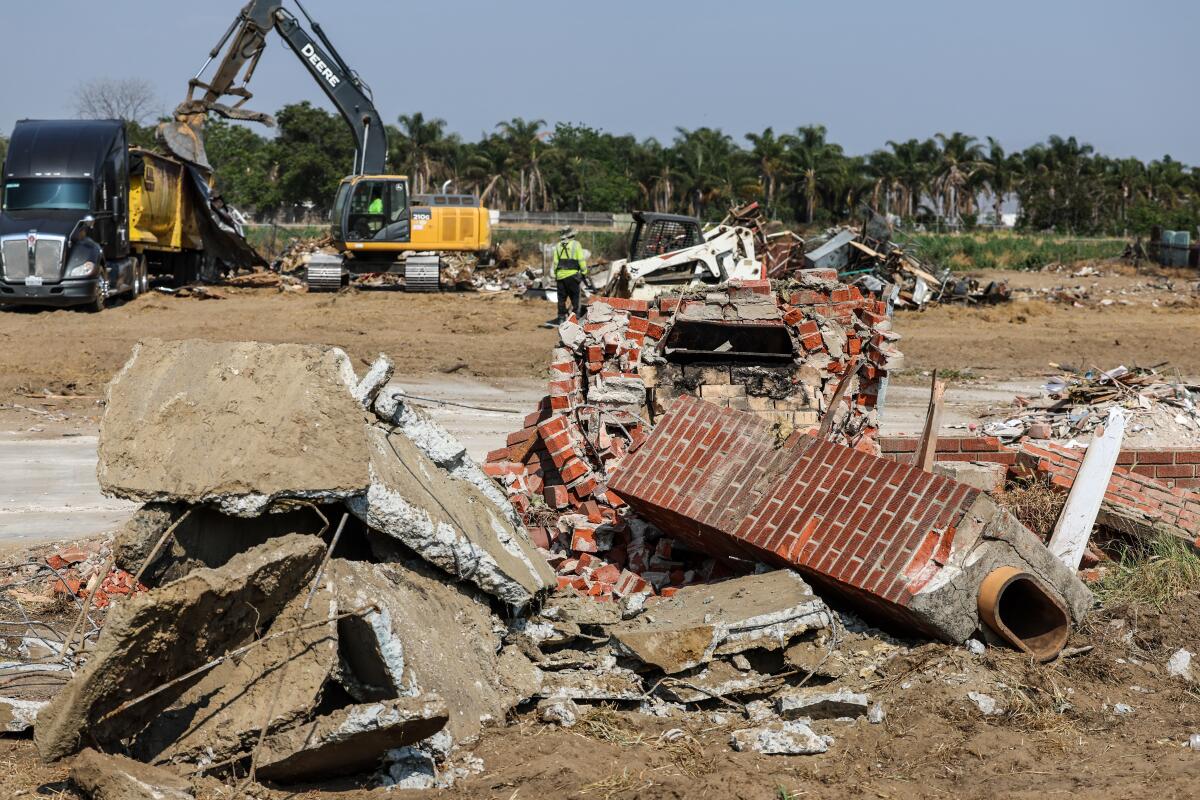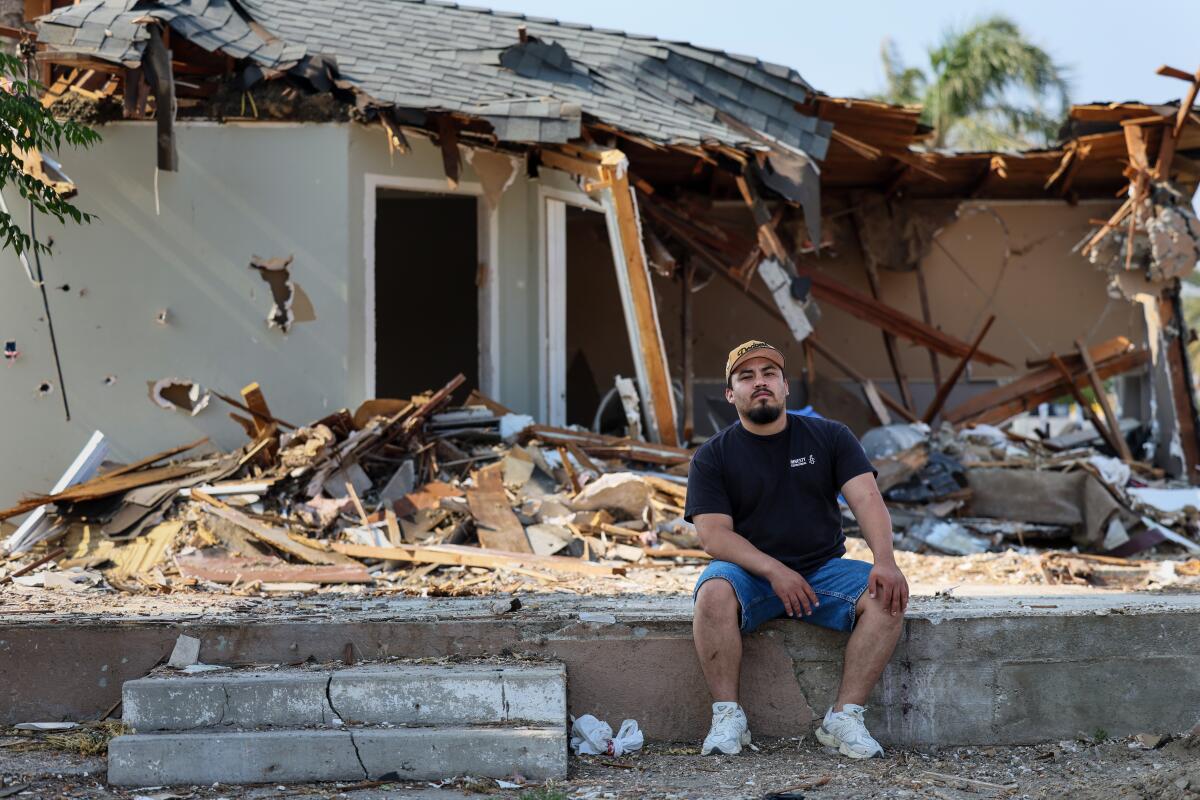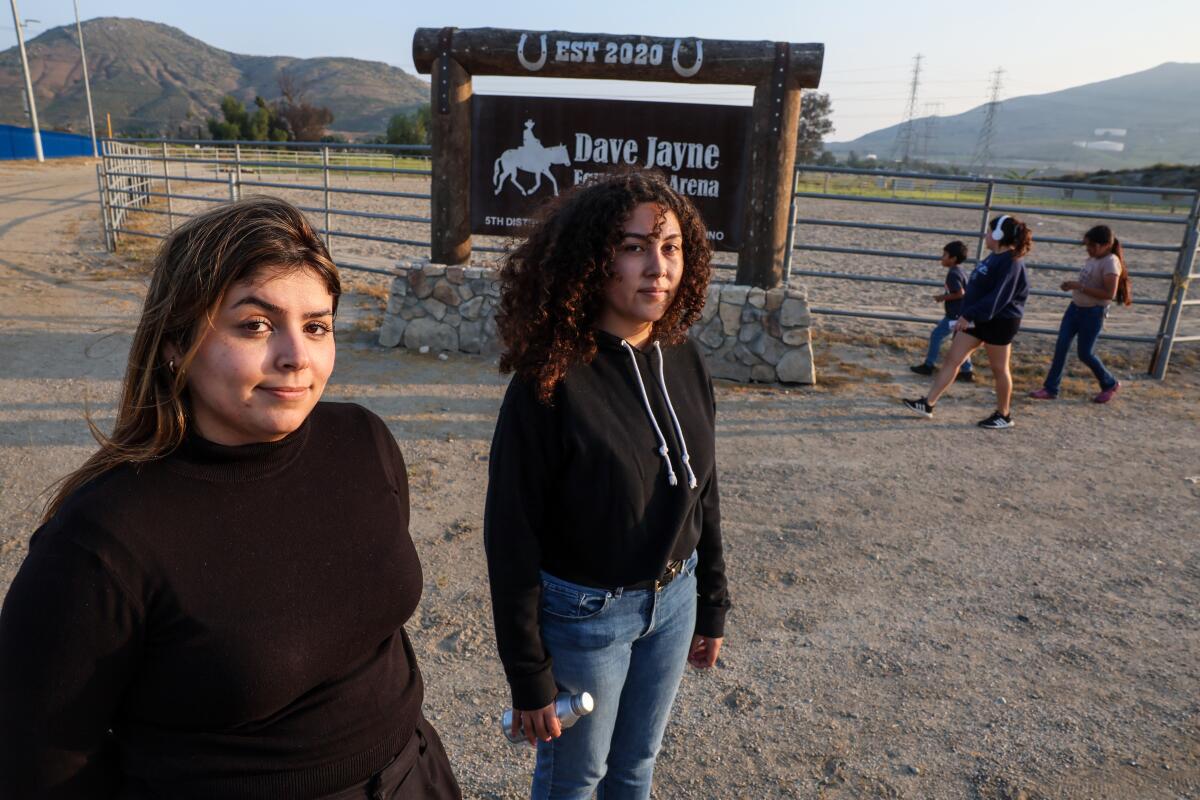San Bernardino County has targeted majority Latino community for warehouse development, complaint alleges

Two environmental groups are alleging that San Bernardino County officials violated federal anti-discrimination laws by approving a disproportionate number of warehouses and logistics centers in a majority Latino community.
The developments expose residents of Bloomington, an unincorporated community with deep equestrian traditions, to air pollution and contribute to housing instability and inequity, the nonprofit environmental law organization Earthjustice said on behalf of San Bernardino-based the People’s Collective for Environmental Justice in a complaint filed with the federal government last week.
The complaint asks federal agencies to investigate the claims and meanwhile put warehouse development in Bloomington on hold.

A spokesperson for San Bernardino County declined to comment on the complaint.
Bloomington recently made headlines because a developer is demolishing 117 homes and ranches to build an industrial park. The community of 23,000 people is rapidly transforming as developers convert areas around the 10 Freeway into a logistics corridor connecting goods shipped into Southern California ports with online shoppers across the nation. Proponents of the developments say they bring jobs and major infrastructure improvements.
Bloomington is the latest Inland Empire community to weigh the tradeoffs of allowing a developer to bulldoze a rural neighborhood to make way for a sprawling warehousing complex in service of online shopping.
The complaint says that other unincorporated areas of San Bernardino County haven’t experienced the same rapid industrialization, even though they have similar characteristics, including access to major freeways, flat topography and historically rural land uses.
Bloomington, which straddles the 10 Freeway, has 15 warehouses and five more that have been approved, according to Warehouse CITY, a tracking tool from Radical Research and the Robert Redford Conservancy for Southern California Sustainability at Pitzer College.
Mentone, about three miles from the 10, has three warehouses. The desert communities of Phelan and Piñon Hills, near State Route 138, and Oak Hills, near Interstate 15, have five among them.

Bloomington is nearly 90% Latino, and Mentone is 42% Latino. The Latino populations of the three desert communities range from 44% to 56%.
“In our analysis, it was clear that there was a systematic targeting of Bloomington for warehouse development in a way that wasn’t occurring in other unincorporated parts of the county that have much fewer people of color, Latinos specifically,” said Katrina Tomas, associate attorney for Earthjustice.
County leaders and developers see Bloomington residents — many of whom are immigrants and more than two-thirds of whom speak a language other than English at home — as “less willing to fight,” said Alicia Aguayo, communications manager for the People’s Collective for Environmental Justice. She pointed to the lack of quality translation at public meetings.
“We don’t believe that warehouses should be in those communities either, but it is clear that Bloomington is disproportionately targeted because a majority of people of color live in Bloomington compared to the others,” Aguayo said in a statement.
The Jurupa Valley City Planning Commission has requested further study on a development that potentially threatens one of the oldest plants in the world.
Gary Grossich, a member of Bloomington’s Municipal Advisory Council, disagrees with the analysis. In the past, he says, he has supported planned warehouse development along designated truck routes when he believes it will provide the infrastructure, jobs and revenue for Bloomington to eventually incorporate as a city.
Bloomington is being targeted not because of its racial makeup but because it is closer to the ports and the Union Pacific railroad tracks than some other communities, Grossich said. He added that industrial development in Bloomington is “minimal” compared with surrounding cities such as Fontana, Rialto and Jurupa Valley.
“For some reason, the environmental justice community wants to single out Bloomington as ground zero for warehouse development,” he said, “and in my opinion, that’s not really the case.”

The complaint, filed under Title VI of the Civil Rights Act of 1964, cites the San Bernardino County Board of Supervisors’ January approval of a 260,000-square-foot warehouse and distribution building as the “latest example” of singling out Bloomington for development. Title VI prohibits racial discrimination by agencies such as the county as a condition of receiving federal money.
Developed by Duke Realty, the project will require the demolition of two single-family homes, decreasing the already limited affordable housing in the community, the complaint alleges. It will also be located 330 feet from Bloomington High School. The Colton Joint Unified School District in February filed a lawsuit alleging that the county failed to conduct a sufficient environmental review and is asking the court to halt the project.
This article is part of The Times’ equity reporting initiative, funded by the James Irvine Foundation, exploring the challenges facing low-income workers and the efforts being made to address California’s economic divide.
More to Read
Sign up for Essential California
The most important California stories and recommendations in your inbox every morning.
You may occasionally receive promotional content from the Los Angeles Times.













